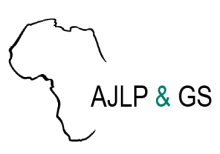Land Library Search
Through our robust search engine, you can search for any item of the over 73,000 highly curated resources in the Land Library.
If you would like to find an overview of what is possible, feel free to peruse the Search Guide.
/ library resources
Showing items 64 through 72 of 1599.This book has adopted a food systems framework as a new way of conceptualizing and designing food policies and research.
Social protection programs (SPPs) are designed to help individuals and households cope with chronic poverty, destitution, and vulnerability. In the context of food systems, SPPs can help tackle the challenge of affordability of healthy diets.
For the 1.5 billion people living in fragile and conflict-affected settings,
livelihood challenges are compounded by climate change, unsustainable
resource consumption, poor governance, and weak social cohesion. In
The mid-hills of Nepal account for 68% of the country’s total area[1] and 56% of its arable land. Ranging in altitude from 610m to 4,876m, there are many small pockets of micro-irrigation that have the potential for high-value crop cultivation.
Egypt’s Haya Karima (HK) Initiative aims at improving the quality of life in the country’s rural communities through interventions related to human development, infrastructure, and economic sectors.
Zambia has historically qualified as a regional model of stability and peace.
Most people in Niger still rely heavily on agriculture as a source of income. However, low productivity, climate change, soil infertility, pests, and diseases are challenges faced by this sector. As a result, the nation suffers from a severe problem of food insecurity.
Agriculture, the backbone of the Ethiopian economy, contributes roughly 40% of GDP, more than 75% of employment, and 80% of foreign exchange earnings (FAO, 2019).
It is critical to have land policies that facilitate access to and effective control of land and other natural resources to achieve inclusive growth and eradicate poverty.


